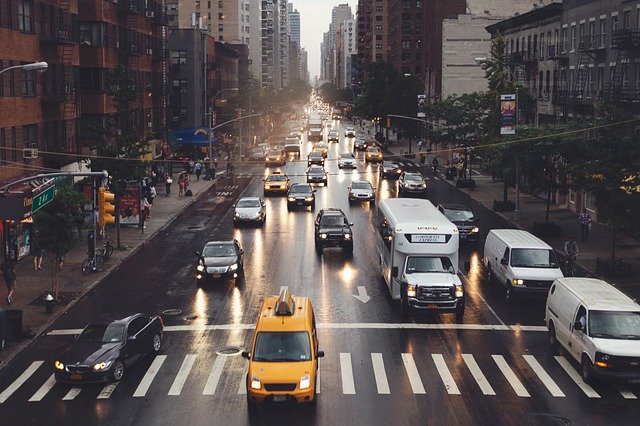How Do I Know if My Neighborhood is Safe?
Michelle Wilson - September 8, 2023

A home is arguably the biggest purchase of your life, so choosing a safe neighborhood should be a top priority. It’s critical that you do the appropriate research to ensure you feel safe within your new home, eliminating threats and dangers as much as possible. To find out if your home is safe, consider talking to local police services, review online search engines, talk to people in the area, and check the place out at different times.
Table of Contents
Talk to Law Enforcement Services
Although police officers can’t give you the specifics on a particular neighborhood, many officers will give unsuspecting individuals a general idea of police activity in an area. To check neighborhood safety, contact the local police service and have the predicted address ready. Ask the receptionist if you can speak with an officer about a potential address.
When speaking with the officer, ask them about the number of phone calls or reports within the area. Talk to the officer about criminal activities (including violent crimes, drugs, and break-ins) if possible. If you have children, mention this to the officer and ask whether they’d move their family to the area.
Visit Popular Search Engines
Start your search with popular search engines, by entering the prospective address into the search bar. Scan through the results for any news events or recorded entries for your property. Repeat this process for other search engines, as each website will record logs differently. Subsequently, enter the street name into your search engine and review the information included in the results.
Talk to Others in the Area
One of the easiest ways to get an honest idea of the area is by talking to others in the community. Your neighbors will have the best insight into what happens in the area and what you can expect when you move in. This method isn’t just beneficial for safety concerns; it’s also helpful for finding a lifestyle match. You don’t want to move into a new home and discover the house next door loves late-night parties.
While it may be intimidating, knock on your neighbor’s door and introduce yourself. You want to get a feel for the community and connect with others before you formally move in. Start the conversation by introducing yourself and asking them about the area. Talk about local amenities, parks, schools, and exciting neighborhood dynamics. Occasionally, you’ll run into someone with much to say about the community – good and bad.
Check Out the Community at Different Times
It’s essential to visit the new area at different times. Always check the property during the daylight hours and also after dark. You’ll capture the morning chaos, traffic, and any noise and chaos into the evening hours. Pay attention to street lights, traffic, noise, and any concerning aspects of the area.
Also, pay attention to minor details that might suggest an unsafe area. People take pride in their property and look after the community in safe places. Take note of graffiti, overgrown yards, trash, broken windows, and run-down homes. Although every neighborhood will have one or two unsightly homes, many homes could suggest an unsafe environment.
Check Out How Many Homes are for Sale in the Area
The number of homes for sale in an area can suggest the overall safety. In a few cases, large quantities of homes on the market could mean people leaving a neighborhood to escape increasing crime. Even if the number of homes for sale is due to other reasons, vacant homes are frequently unsavory. Vacant homes often attract transient individuals, prostitution, gangs, and drug production.
Abandoned Grocery Stores
Scan through the local area for grocery stores and restaurants nearby. A site without proper grocery stores and restaurants may indicate dangerous neighborhoods. According to recent studies by the American Nutrition Association, most impoverished areas are void of fresh fruits, vegetables, and other healthful foods. In fact, neighborhoods filled with fast food joints and convenience stores are more likely to be problematic. If the area you’re considering is missing healthy and nutritious locations, look into the city and place a little further.
Consistent Police Presence
Police officers appear when there are calls and reports within a geographic region. If you notice significant police presence in your area, there’s a chance it’s a bad region. While crimes are often concentrated in large cities, it doesn’t mean your site is safe if it’s a small town. It’s always better to pay attention to the area and watch for law enforcement.
Review Rentals in the Area
Studies have shown that communities with larger populations of renters are often associated with higher crime rates. That doesn’t mean every renter is terrible; it suggests people should pay attention to the area they’re calling home. Remember, the more people in a neighborhood, the higher the chance a few characters may be up to no good.
How to Determine Your Neighborhood Is Safe
Crime can happen virtually anywhere, but there are general items that can indicate public safety within a community. Here are a few things that might demonstrate the security of your new area:
Children Playing Outside
If parents are comfortable leaving their children to play outside, there’s a good chance the community is safe. When observing different areas, always look for children playing in yards, biking around the area, and running around.
Plenty of Local Businesses
A prospective location with plenty of local businesses shows signs of prosperity and security. When someone feels financially secure they tend to encourage community growth.
Local Community Events
Check out local community events in your area that might suggest a close-knit community. Events like farmer’s markets or block parties indicate a safe neighborhood. Look for items that bring families throughout the area together. The more engaged the community, the safer you may feel calling it home.
Neighborhood Watch Groups
A new neighborhood that has a neighborhood watch group that highlights people taking pride in the community. Areas want to keep it safe and ensure any suspicious activity is reported immediately. A small group often tries to look out for everyone, increasing neighborhood security overall.
Conclusion
Looking past the specific house and investigating the community is crucial when buying a home. While many neighborhoods are safe, a few wrong pockets can spell disaster for homeowners. Consider contacting local law enforcement, checking the area at different times, and talking to the residents to get a candid opinion of the area. Always look for broken windows, overgrown lawns, and other signs of a community that doesn’t care for their property. Although these signs don’t guarantee an unsafe neighborhood, they should raise a few red flags. Knowing what to look for can keep you and your investment safe for years to come.
Related Posts
Recent Posts
Popular Posts
Sorry. No data so far.








